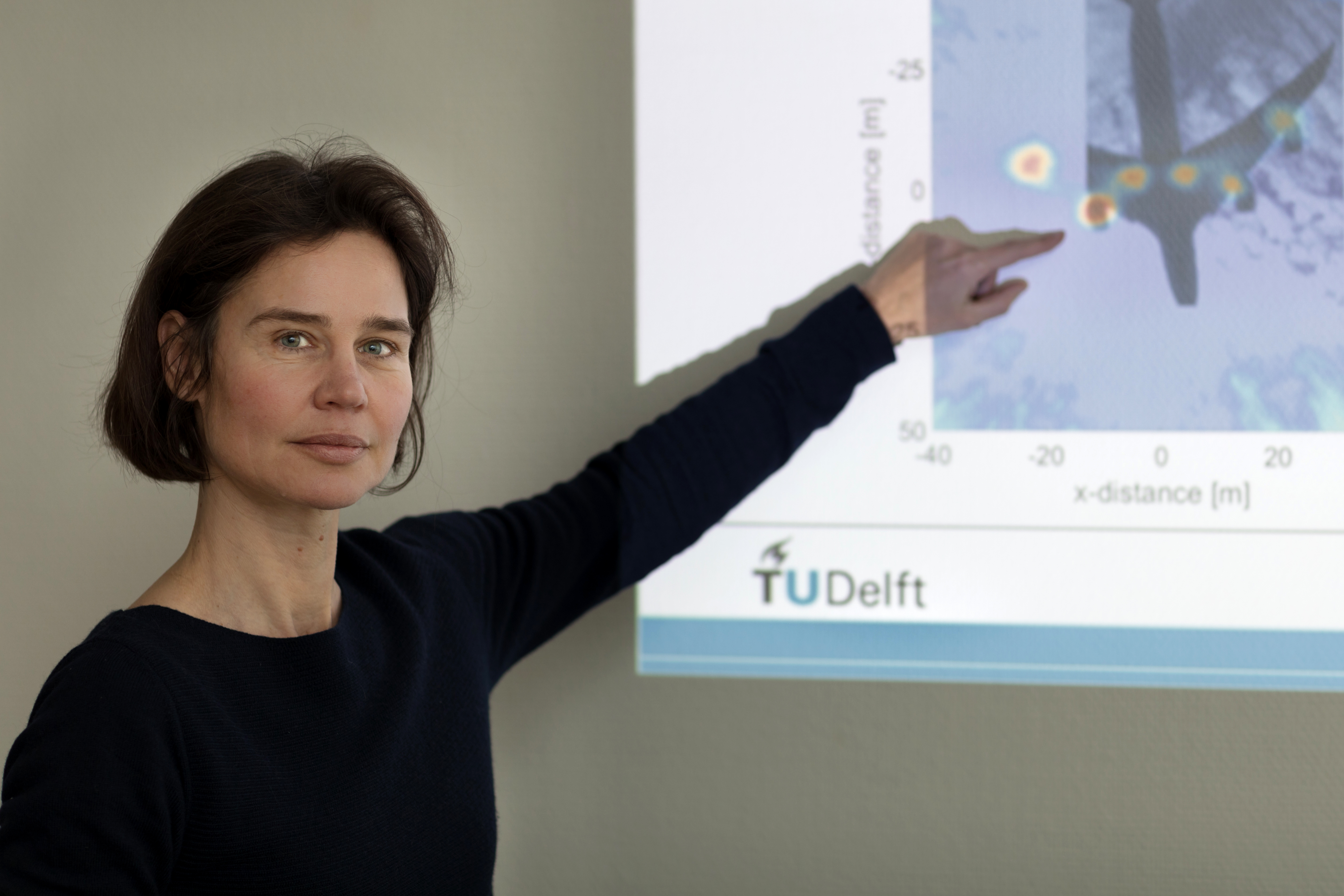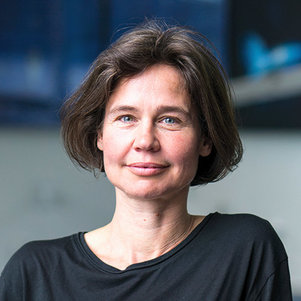Mirjam Snellen
If you can precisely identify the noise that an aircraft produces, you can make smart use of this information in designing sustainable aircraft. This is the aim of Associate Professor in Acoustics Mirjam Snellen (now Professor ‘Acoustic data analysis and imaging for aviation noise’) and her colleagues in the Aircraft Noise and Climate Effects (ANCE) research group, who find it fun to explore acoustic puzzles.
Snellen's academic career has revolved around acoustics: from her degree in Theoretical Aerodynamics at TU Delft through to her work at TNO and her 15 years as assistant and associate professor in Delft. “It was a genuine interest in the subject that attracted me. My time working on my PhD was particularly interesting: I investigated how you can obtain the maximum possible information from acoustic measurements. The trick is to use smart algorithms and models to gain as full as possible an understanding of the sound received. By measuring a sound field using an array of microphones, you can distinguish between different sources of sound, creating a kind of acoustic picture, and even gain an estimate of environmental parameters, such as the sound speed.” Snellen and her colleagues lecture about this in the Operational Optimisation and Acoustic Imaging modules.
For Snellen, it is all about collaboration, not only with the staff in the research group (led by Dick Simons), but also with other groups and the doctoral candidates who do the fieldwork. Her personal passion is for measurements, supported by models, with a focus on acoustic data analysis. “They're a bit like a difficult puzzle. You need to think carefully about which aspects play a role in the time between the transmission of a signal and its reception. There are all kinds of possibilities: we all set off for Schiphol, position our array, conduct measurements, apply our processing techniques and are able to unravel the precise sources of noise and their levels on an aircraft (engines, flaps, slats, landing gear, etc.).”
Euphoria
Snellen finds all of this fantastic: working with acoustic data, arrays, seeing what results you can get and whether the models are accurate. “Then there is the euphoria when you really understand what's going on!” The fact that the array techniques are being applied in operational conditions is a major bonus: “We're actually working in a living lab. The measurements conducted at Schiphol are providing us with hugely relevant data. No modelling is involved, but a real aircraft, operating as in reality. If you are using just a single microphone, the results might be questionable. There could have been someone talking nearby or a moped going past. Using an array, though, all interfering sources are excluded.”
The collaboration with the Wind Energy group also provides Snellen with inspiration for acoustic data analysis. “We're working together to devise future techniques for making aircraft even quieter. We're also focusing on wind turbines to generate wind energy more efficiently and quietly. For example, we're exploring the use of porous materials. Can they really be used to make aircraft and wind turbines quieter? If so, in which conditions? Our role in this is to take measurements. We do this with an acoustic array that we have set up in the faculty's vertical wind tunnel.”
Snellen aims to properly understand the acoustics of aircraft. “We can design all kinds of new aircraft approach procedures based on models of aircraft noise, but how good are these models really? Measuring provides information on the real situation: exactly how much noise do the engine, the landing gear and the wings generate? This is still unclear in far too many cases. Our arrays and processing techniques provide the clarity needed. Incidentally, we built our four arrays ourselves. This gives us a lot of freedom: we can position the microphones where we want and conduct tests when we want. They're also not so expensive, but would be unaffordable if you had to buy them.”
By way of illustration, Snellen cites research involving the Fokker 70. On this aeroplane, the engines are positioned above the wing, which shields the noise. “A lot of research is being conducted on this effect worldwide. The Fokker 70 was for us another example of a living lab. Using an array under the flight path at Schiphol, we demonstrated that there actually was a shielding effect in practice. This knowledge can be used in the smart design of quieter aircraft in the future. It's good to know that our research is helping to create a greener world. I try to do the same in my personal life. We have solar panels and a solar collector and I avoid using the car as much as possible.”
Find more information about:
Aircraft Noise and Climate Effects

